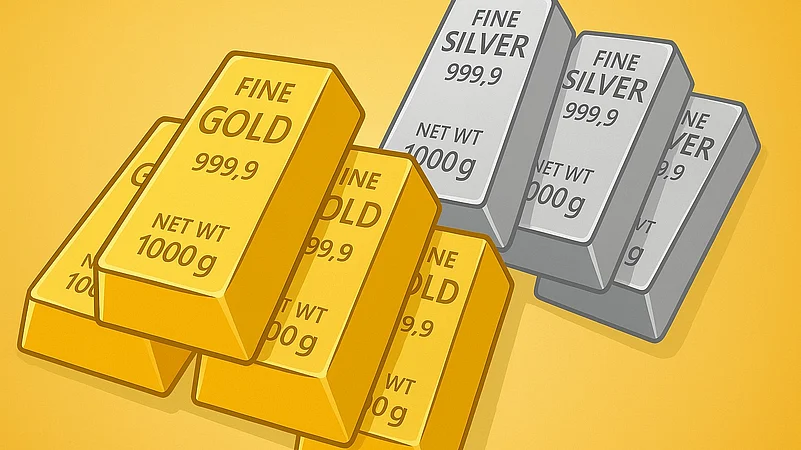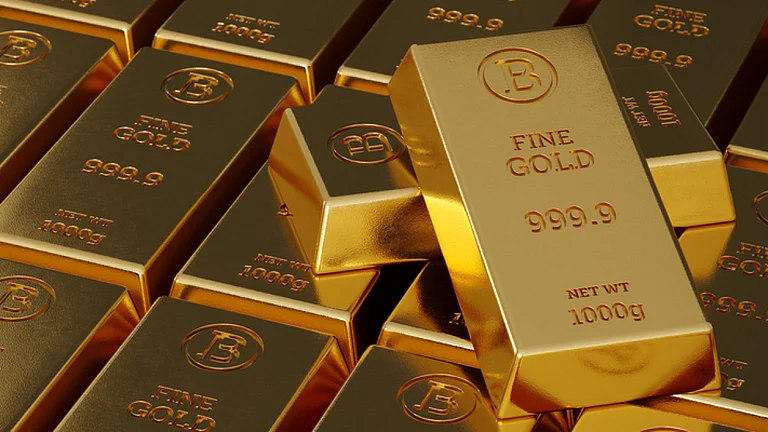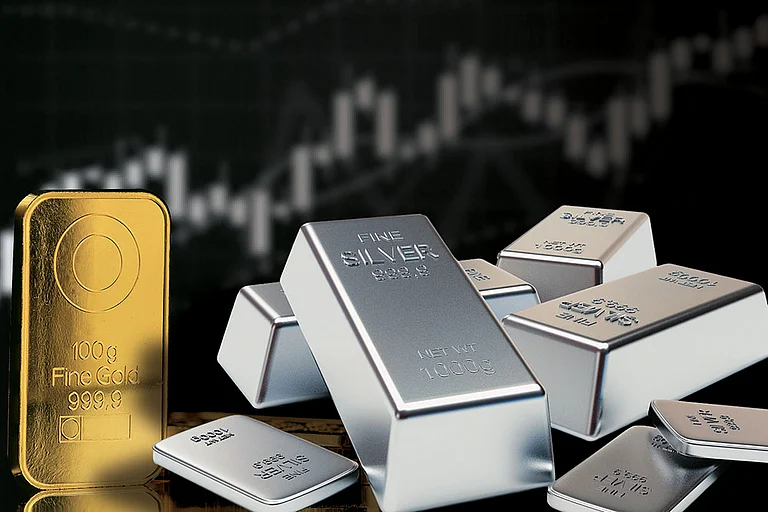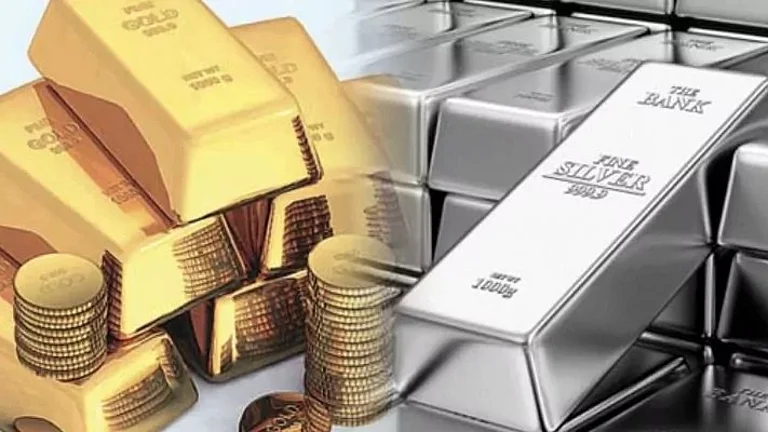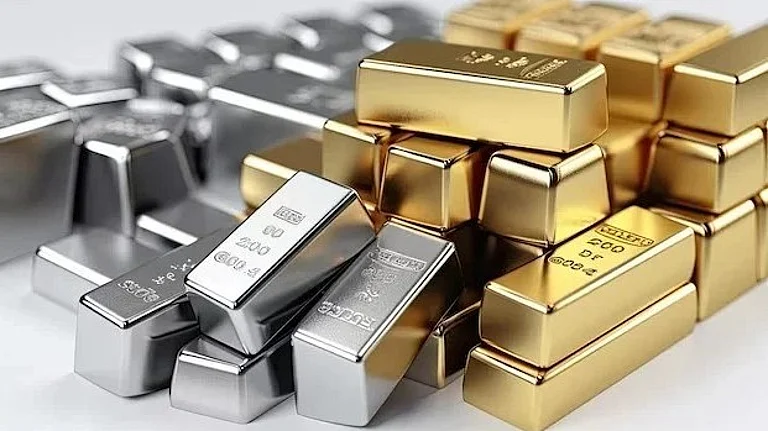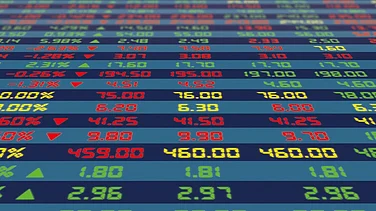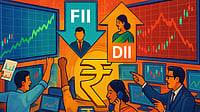Gold may have staged a steady rebound in recent weeks, it is silver that has made a more dramatic and structural comeback. The white metal has taken centre stage in 2025, outperforming the yellow metal across both global and Indian markets.
Amid renewed global uncertainty from tariff tensions, geopolitical tussles and Fed policy ambiguity to shifting industrial dynamics, precious metals have once again sprung into the limelight. Often seen as gold’s cheaper cousin, silver has emerged as a compelling investment story, supported not just by its perceived role as a safe haven but also due to its industrial significance.
Gold Holds Ground, Silver Surges Ahead
On Monday, spot gold rose to a three week high of around $3,400 an ounce. The yellow metal has largely held above $3,350 for over two months, supported by geopolitical unease and expectations of US interest rate cuts. President Donald Trump’s threat of 30% tariffs on imports from the EU and Mexico added further safe haven momentum.
On the other hand, silver has been writing a different script. The white metal has climbed more than 27% over the past year, with prices hitting a 14 year high globally and an all time high of ₹1,15,000 per kg in India this week.
“Silver briefly touched a near 14 year high before easing, supported earlier by trade tariff concerns and a rebound in safe haven buying,” noted Rahul Kalantri, VP Commodities at Mehta Equities. “With key US inflation data due, short term direction hinges on rate outlook and the dollar’s strength.”
Silver’s New Age Driver: Industrial Demand
The key tailwind firing up silver’s demand is its growing use across new age technologies. Beyond jewellery and store of value appeal, silver is cementing its place as an industrial metal vital to the world’s energy and tech transition. From photovoltaic cells in solar panels to components in electric vehicles and semiconductors in artificial intelligence hardware, silver’s presence is becoming crucial.
According to the Silver Institute, industrial demand made up 55% of total silver demand in 2023, a figure expected to rise in the coming years. Solar panels, electric vehicle batteries are some key new age technologies that require the use of silver and with more such autonomous features and increased digitisation, the demand for silver in the industrial landscape is expected to grow further.
The AI Factor
AI and the surge in data centre activity are adding unexpected tailwinds. Silver is essential in switches, cooling systems, and semiconductors, core components of both AI infrastructure and modern electronics. With data centres predicted to consume 4% of global electricity by 2030, silver’s demand is only deepening.
Yet supply remains tight. Global mine output has been marginally down in the last two years. The tight supply, combined with increasing demand sets the stage for a strong upswing in silver prices in the times ahead.
Changing Preferences
In India, the world’s largest silver consumer, buyers are beginning to shift preferences. As consumers that were in a long love affair with gold, Indian households are now shifting towards silver, lured by affordability, better recent returns, and the metal’s undervaluation.
Silver prices in India have outpaced gold in recent months, rising 21% in three months compared to gold’s 5% jump. June saw record inflows into silver exchange traded funds (ETFs), ₹20.04 billion, more than double May’s figure. In Q1 FY26, total ETF inflows into silver stood at ₹39.25 billion, far exceeding ₹23.67 billion in gold ETFs, data from AMFI showed.
Staged for a structural rebound
Meanwhile, Gold and silver prices exhibit a positive correlation historically, with Silver prices catching up with those of Gold more often than not. The gold-to-silver ratio is mean reverting in nature. Meaning, that every time the ratio has hit the extreme levels, the prices of silver shoot up to maintain the equilibrium level.
The gold-silver ratio has just hit a remarkable 101:1 earlier this year, meaning it took 101 ounces of silver to purchase just 1 ounce of gold. This extreme reading has only occurred three times in the past 50 years (1991, 2020, and this year).
“Historical trends suggest the rejection zone of the ratio has reached where silver begins its catch-up rally. Every time the ratio has exceeded the upper extreme (90-100 range), silver has subsequently outperformed gold, bringing the ratio back to its long-term average of 65:1,” said said Sham Chandak, head of institutional broking at Elios Financial Services.
In past times, silver doubled in price within just 5 months after the ratio spiked to 125:1 during the Covid pandemic. Hence, as per recent trends, the ratio represents a significant deviation from historical norms.
“The gold silver ratio is correcting from extreme levels,” said Chandak. “Statistically, it looks much more probable for the ratio to self correct. The stars may be aligned once again for Silver to shine brighter.”






